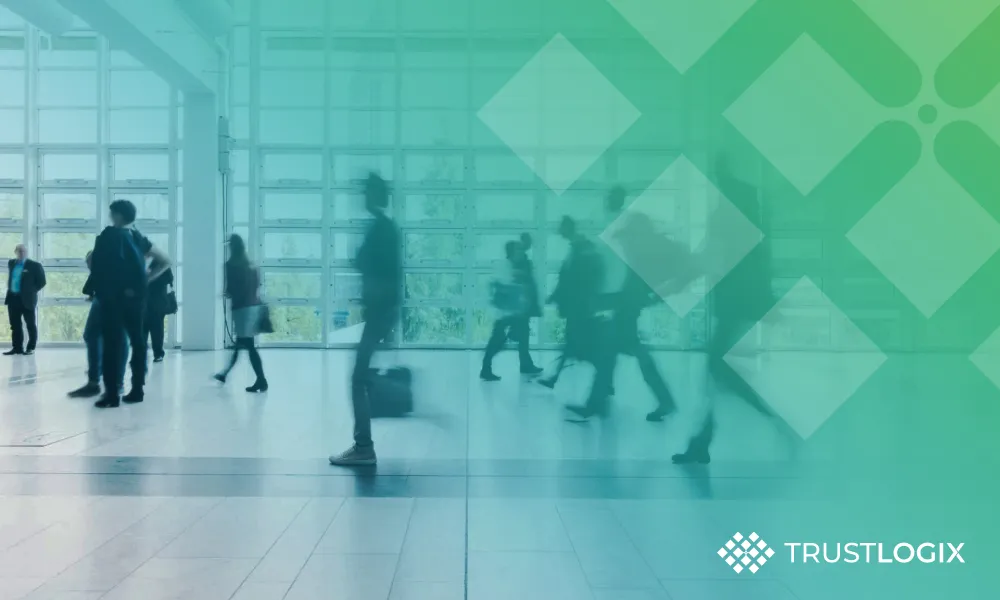Modernizing Data Access: Self-Service Data Access Provisioning


Frustrated with month-long delays for simple data requests? Fatigued by constantly bugging IT to get basic access? Tired of manually managing data access requests from multiple team members who all need access right now? Today's manual and siloed data processes simply can't keep up with the pace of business. As organizations embrace data-driven decision-making, lack of access and governance are crippling insights.
Leading organizations are breaking free of these limitations with a new approach: self-service data access provisioning. This blog explores self-service data access provisioning, why it's critical to your business, what's needed to implement self-service data access, and finally, how to build self-service capabilities and automated workflows to accelerate data access provisioning to meet the demands of modern cloud data warehouses and data lakes, like Snowflake and Databricks, using TrustLogix.
What is self-service data access provisioning?
Self-service data access provisioning refers to enabling business users to securely access and analyze data independently, without IT bottlenecks. This is often achieved through an automated platform where users can request access to specific datasets or domains, which are then auto-approved based on predefined roles and entitlements. Approval workflows and data access are tied to the user's profile and security policies. In a federated data ownership model, access is tied to data domains controlled by stakeholders across business units, as opposed to one centralized IT team. Enabling self-service provisioning in this environment requires cross-domain workflows and consistent governance so users can seamlessly get access to data sources spanning multiple owners.
Why is self-service data access provisioning critical to the business?
Self-service data access provisioning:
- Empowers business users - a self-service platform enables business users to access, analyze, and share data without relying on IT/specialists. This makes users more autonomous and agile.
- Provides faster time to insights - by reducing dependency on IT, business users can get faster access to data for analytics and decisions. This accelerates time to insights.
- Improves scalability - IT cannot keep up with data requests as businesses grow. A self-service platform scales on-demand to meet business needs.
- Increases consistency and governance - self-service ensures standardized data tools, metrics, and policies so access is consistent and governed.
- Gives users flexibility - users can access data how they want and when they want (APIs, dashboards, reports, etc.) This enables flexible and customized consumption.
- Is more cost-efficient - self-service is more efficient than relying on expensive data specialists for each request.
- Supports new use cases - makes it easy to support new analytics use cases on the fly without IT bottlenecks
What do you need to create self-service data access?
An effective model for self-service data access leverages domain ownership, approval workflows, user attributes, and access controls.
- Domain ownership: Organize data into domains with designated stewards responsible for approving access requests. Leverage tagging and classification capabilities on modern data platforms.
- Approval workflows: Automate request ticketing, review, and approval using service management tools, like ServiceNow, that integrate with access provisioning tools, like TrustLogix.
- Access controls: Leverage role-based and/or attribute-based policies to grant approved access at appropriate levels. Manage user attributes - Define attributes applicable for products in the domain, department, project, location, and purpose that determine access needs and scoping.
- Access Monitoring & Continuous Risk Assessment: In a self-service model, continuous monitoring and risk evaluation provide crucial oversight. While access is democratized, tracking usage patterns and data flows is critical to identify potential breaches or abusive activity. The framework balances democratization and governance, providing flexibility within secure constraints. Integrations with data platforms strengthen policy enforcement and auditing.
Building a Self Service Data Access request platform with TrustLogix
TrustLogix integrates with data platforms like Snowflake, leveraging built-in classification to help data owners organize domains. It facilitates collaboration through shared object management across domains. Admins can define policies referencing objects beyond their domains for flexible governance. Capabilities to manage user attributes and apply coarse or fine-grained controls enable aligned access. Integrating with native auditing provides insights into access patterns and risk. Together this streamlines domain-driven governance by empowering decentralized teams with contextual guardrails. Data owners maintain oversight of their domains while collaborating securely on broader access needs. TrustLogix helps make governance a seamless enabler, reducing friction through automation and visibility. The result is scalable policy administration that balances access and security. Furthermore, TrustLogix provides APIs for provisioning the policies and managing attributes to be used in controlling access controls on data products.
TrustLogix integrates tightly with platforms like Snowflake to streamline building self-service provisioning using the native capabilities of the data platforms.
Domain and Data Product Management: TrustLogix provides businesses with a user-friendly UI to automatically categorize data objects and tag them to identify domains to be secured by stewards. It further facilitates collaboration between domain owners, through shared object management across domains and ensures there are no conflicting policies.
Federated / Delegated Administration: Data Governance or Platform Owners can specify which domains (and implicitly the database objects therein) can be referenced by policies in a given domain as part of the delegated admin or domain configuration in TrustLogix, this feature leverages the native tag capabilities of data platforms.
Integration with Access Request Workflows & Entitlement Provisioning: Enterprises can build approval workflows in tools of their choice, like ServiceNow, to automate policy provisioning at the end of the approvals by leveraging TrustLogix Policy Provisioning and User Attribute Management APIs. These APIs will seamlessly provision fine-grained attribute-based policies and entitlement management grants into each specific domain where access has been approved.
Monitoring and Visibility: TrustLogix provides a Data Security Posture Management service designed for Security Owners and Data teams who need to provide proof of compliance. TrustLogix offers Data Security Posture Management, providing visibility into various data risk categories, including dark data risks, data exfiltration risks, regulatory compliance risks, and overly granted access.
Together with data access provisioning and monitoring enables IT to effortlessly roll out self-service provisioning that aligns to data stewards' domains. Users get rapid access within governed guardrails. With TrustLogix, organizations can swiftly actualize self-service provisioning that delights business users while assuring security teams. Governance and automation combine for easy policy administration that scales securely.
.webp)
Self-service provisioning speeds up data access by removing manual IT dependencies, while federated ownership allows distribution of data control across specific business domains. Combining the two strategies enables agile access with distributed data governance and with TrustLogix centralized monitoring of data access patterns, data teams can federate data control to securely automate provisioning across domains and still maintain a strong security posture.
Stay in the Know
Subscribe to Our Blog






